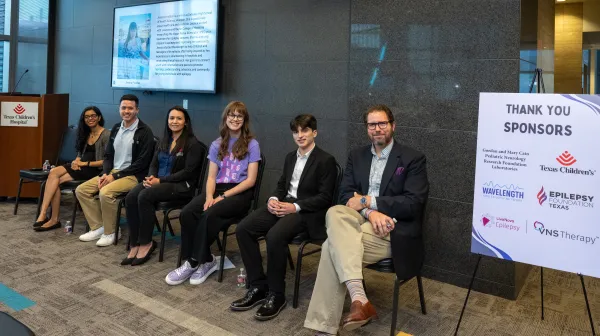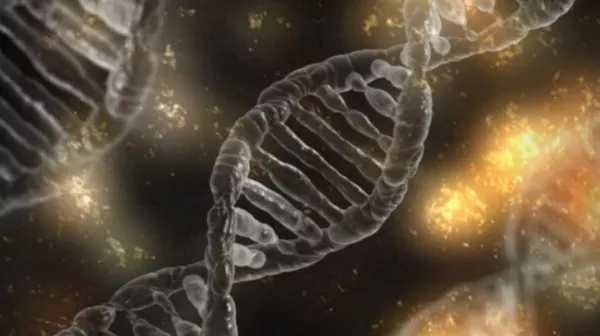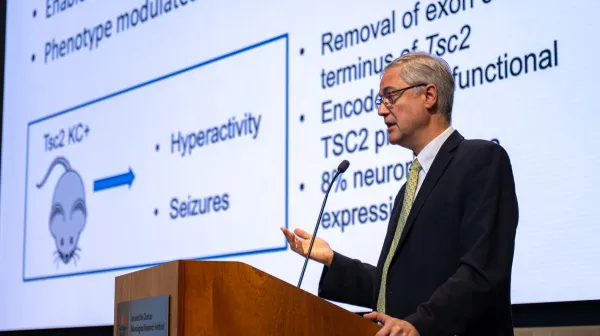Topics
HOUSTON -- (February 28, 2013) -- The three most important factors in real estate are location, location, location, and the same might be said for mutations in the gene MECP2, said researchers at Baylor College of Medicine and the Jan and Dan Duncan Neurological Research Institute at Texas Children's Hospital in a report in the journal Cell.
"Where a mutation occurs can affect the severity of the symptoms of the disease," said Dr. Huda Zoghbi, professor of molecular and human genetics at BCM and director of the NRI. Zoghbi, corresponding author of the report, found the MECP2 gene in 1999 and confirmed that deficiency in the protein causes Rett syndrome, a post natal genetic disease that mainly affects girls.
Symptoms influenced by gene location
In the study, she and her colleagues relied on data from rare male patients with disruptions in MECP2 that showed that severity of symptoms could be influenced by the location of the gene mutation. The few boys with this disorder fell into two broad categories: Those who suffered severe brain disease and death before age 4 and those who lived for decades with symptoms similar to that of Rett or developmental delay and other disorders similar to those seen in autism.
Looking at the placement of the mutations in the boys, they hypothesized there was a distinct difference in symptoms seen in boys who had mutations at amino acid 270 in the protein and those who had mutations only slightly farther along, at amino acid 273. The protein is truncated or shorter in those with amino acid 270 mutations than those with the mutation at amino acid 273.
After Steven Baker, a graduate student in the Program in Developmental Biology at BCM, generated and characterized mice that had mutations at the two sites of the protein, he found that mice who had mutations at amino acid 273 lived longer and developed symptoms later than those mice who had mutations at amino acid 270 or those who lacked the MeCP2 protein all together (knock-out mice).
Disruption of topological feature
One reason for the differences could be that the mutation at amino acid 270 disrupts a key topological feature of the DNA - an AT-Hook domain that is a DNA binding motif. By disrupting this domain, the mutation could affect the way the protein bind the DNA and make the already truncated protein much less effective.
"The participation of patients and their families with Rett researchers really helped us to key in on regions of MeCP2 that are critical for its function," said Baker, who is also an M.D./Ph.D. student in BCM's Medical Student Training Program.
The researchers propose a model for this DNA binding in which MeCP2 binds to sites across the genome. In some spots where this occurs, the protein manipulates the structure of the nearby chromatin.
Chromatin architectural factor
"We think that one function of MeCP2 (the protein associated with the gene) is to alter the architecture of chromatin (the mass of proteins and DNA found in the nucleus of the cell)," said Zoghbi, who is also Howard Hughes Medical Institute investigator.
Baker said, "The picture of MeCP2 as a chromatin architectural factor is emerging from the combined efforts of many laboratories. Understanding how MeCP2 modifies chromatin structure will ultimately allow us to understand why it is so important for neuronal health."
Others who took part in this work include Lin Chen, Angela Dawn Wilkins, Peng Yu and Olivier Lichtarge, all of BCM.
Funding for this work came from the Howard Hughes Medical Institute, the National Institute of Neurological Disease and Stroke (HD053862), and the Baylor College of Medicine Intellectual and Developmental Disability Research Center (F30NS066527).
For more information on research at Baylor College of Medicine, please go to www.bcm.edu/fromthelab.
About Texas Children’s Hospital
Texas Children’s Hospital, a not-for-profit health care organization, is committed to creating a healthier future for children and women throughout the global community by leading in patient care, education and research. Consistently ranked as the best children’s hospital in Texas, and among the top in the nation, Texas Children’s has garnered widespread recognition for its expertise and breakthroughs in pediatric and women’s health. The hospital includes the Jan and Dan Duncan Neurological Research Institute; the Feigin Center for pediatric research; Texas Children’s Pavilion for Women, a comprehensive obstetrics/gynecology facility focusing on high-risk births; Texas Children’s Hospital West Campus, a community hospital in suburban West Houston; and Texas Children’s Hospital The Woodlands, a second community hospital planned to open in 2017. The organization also created the nation’s first HMO for children, has the largest pediatric primary care network in the country and a global health program that’s channeling care to children and women all over the world. Texas Children’s Hospital is affiliated with Baylor College of Medicine. For more information, go to www.texaschildrens.org. Get the latest news by visiting the online newsroom and Twitter at twitter.com/texaschildrens.





